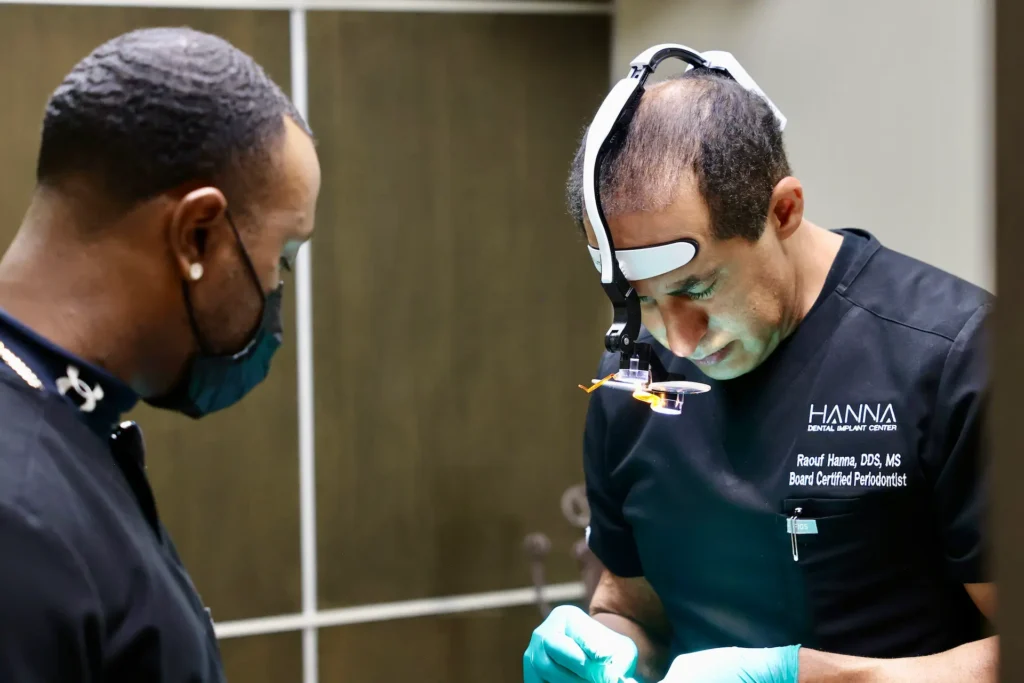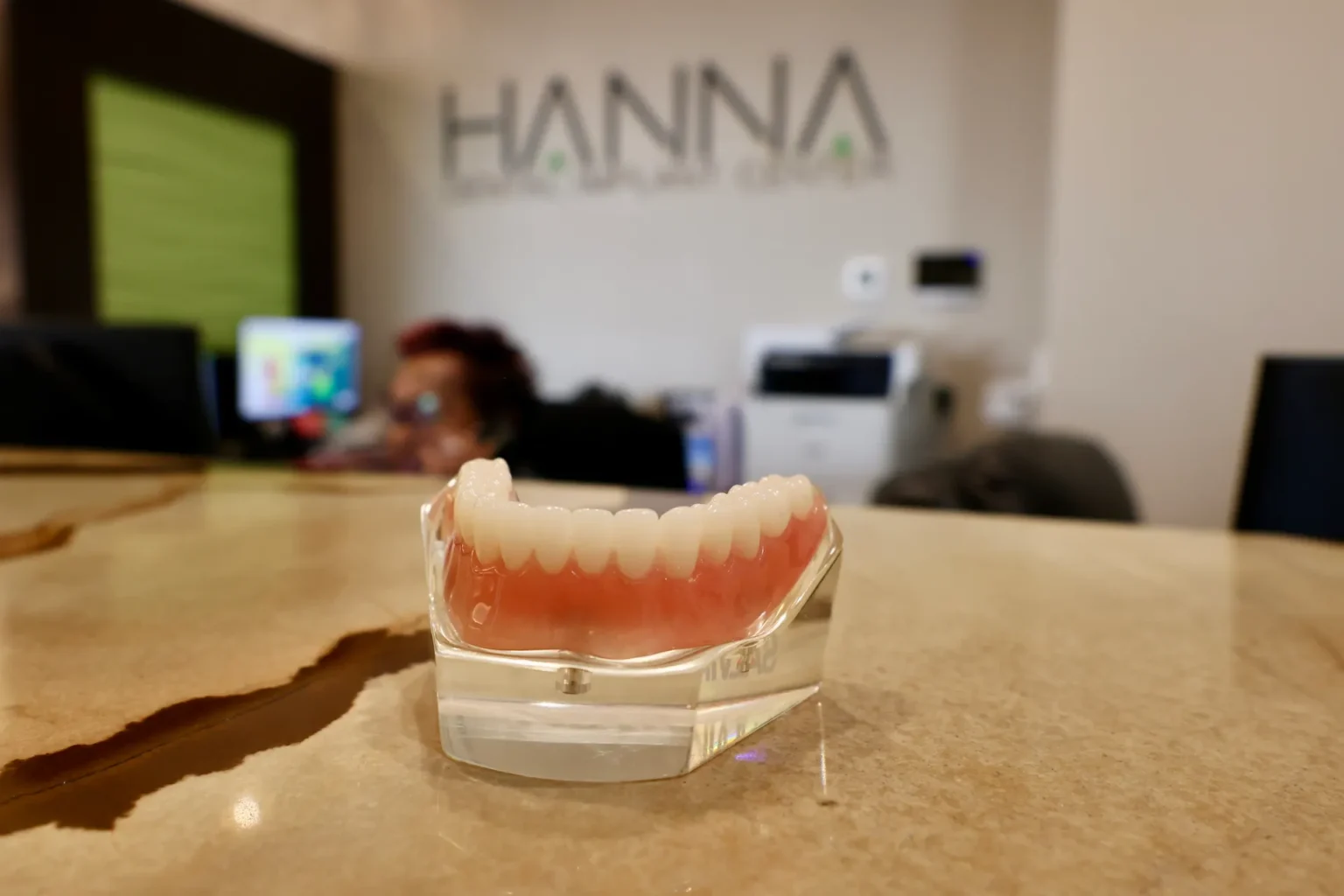Maintaining optimal dental health is crucial for overall well-being, and early detection of cavities and tooth decay plays a significant role in preventing more severe oral health issues.
This comprehensive guide will explore exactly what teeth cavities are, their causes, symptoms, prevention tips, and available treatment options. At Hanna Dental Implant Center, we are dedicated to providing you with the information you need to maintain a healthy smile.
What Are Teeth Cavities?
Teeth cavities are holes or damaged areas in the hard surface of teeth caused by tooth decay. Tooth decay occurs when harmful bacteria in the mouth produce acids that erode the tooth enamel, leading to cavity formation.
There are different types of cavities, including pit and fissure cavities that occur on chewing surfaces, smooth surface cavities that develop on the sides of teeth, and root cavities that affect tooth roots.
Causes of Dental Cavities: Understanding the Factors that Lead to Tooth Decay
At Hanna Dental Implant Center, we believe that educating our patients about the causes of dental cavities is paramount to maintaining optimal oral health. By understanding the factors that contribute to tooth decay, you can take proactive steps to prevent cavities and enjoy a healthy smile for years to come. Below is a comprehensive list of the main causes of dental cavities:
- Poor Oral Hygiene: Inadequate brushing and flossing allows plaque to build up on the teeth. Plaque is a sticky film that contains bacteria. These bacteria produce acids that erode the tooth enamel, leading to cavities.
- Sugary and Acidic Foods: A diet high in sugars and carbohydrates provides an ideal environment for cavity-causing bacteria to thrive. When these bacteria break down sugars, they produce acids that can demineralize and weaken tooth enamel, leading to cavities.
- Plaque Buildup: If plaque is not effectively removed through proper oral hygiene practices, it can harden and form tartar. Tartar provides an ideal surface for bacteria to cling to, increasing the risk of tooth decay.
- Dry Mouth: Saliva plays a vital role in protecting teeth by neutralizing acid and washing away food particles. Certain medications, medical conditions, or lifestyle habits that reduce saliva flow can contribute to dry mouth, increasing the risk of cavities.
- Genetics: Some individuals may have a genetic predisposition to dental cavities due to naturally weaker tooth enamel or a higher susceptibility to tooth decay. However, good oral hygiene and preventive measures can help mitigate this risk.
- Age: As we age, the risk of developing dental cavities may increase. This is often due to factors such as receding gums, reduced saliva production, and natural wear and tear on the teeth over time.
- Acidic Drinks: Frequent consumption of acidic beverages, such as soda, energy drinks, and citrus juices, can erode tooth enamel. This weakened enamel is more susceptible to cavities.
- Tooth Grinding: Bruxism, or tooth grinding, can cause enamel to wear down, making teeth more vulnerable to cavities. Additionally, grinding can lead to cracks or chips in the teeth, providing an entry point for bacteria.
- Inadequate Fluoride Exposure: Fluoride is a mineral that helps strengthen tooth enamel and makes it more resistant to acid erosion. Insufficient fluoride exposure, either through drinking water, toothpaste, or professional treatments, can increase the risk of cavities.
- Infrequent Dental Check-ups: Regular dental check-ups are crucial for early detection and prevention of cavities. Through professional cleanings, your dentist can remove plaque and tartar buildup that cannot be easily eliminated through daily oral hygiene practices.
By being aware of these causes, you can take preventative measures, such as practicing good oral hygiene, reducing sugar consumption, maintaining a balanced diet, and visiting your dentist regularly. At Hanna Dental Implant Center, our experienced team is here to guide and support you on your journey toward a cavity-free smile.
Recognizing the Signs and Symptoms of Cavities: Early Detection for Effective Treatment
At Hanna Dental Implant Center, we understand how important it is for our patients to be knowledgeable about the signs and symptoms of cavities. Early detection allows for timely intervention and can help prevent more extensive dental issues.

Below is a comprehensive list of the common signs and symptoms you should be aware of:
- Tooth Sensitivity: Increased sensitivity to hot, cold, or sweet stimuli is often an early indicator of tooth decay. If you notice discomfort when consuming these types of foods or beverages, it could be a sign of a cavity.
- Toothache or Tooth Pain: Persistent pain or discomfort in a specific tooth can indicate that a cavity has progressed. The severity of the pain may vary, ranging from a mild ache to sharp, shooting pain.
- Visible Holes or Pits: Cavities can cause visible damage to the teeth. You may notice small holes, pits, or craters on the surface of the affected tooth. These areas can be off-color, appearing black, brown, or white.
- Tooth Discoloration: Stains or discoloration on the teeth can be another sign of cavities. Dark spots or patches on the tooth’s surface may indicate decay and should be examined by a dental professional.
- Bad Breath: Cavities can contribute to persistent bad breath or an unpleasant taste in the mouth. Bacteria that cause decay produce odorous compounds, resulting in halitosis.
- Swelling or Redness: If a cavity progresses without treatment, it can lead to an infection that may cause swelling or redness in the surrounding gums. This is a sign that the infection is spreading and requires dental attention.
- Sensitivity to Pressure: A cavity that has reached the deeper layers of the tooth may cause sensitivity when biting or applying pressure to the affected tooth.
- Tooth Mobility: In advanced cases, cavities may lead to tooth mobility or loosening. This occurs when decay has significantly compromised the tooth’s structure, jeopardizing its stability.
It’s important to note that not all cavities present with noticeable symptoms in the early stages and, as such, regular dental check-ups are essential for early detection. Your dentist will be able to identify cavities through visual examination, X-rays, and other diagnostic tools even before symptoms become apparent.
If you experience any of these signs or suspect you may have a cavity, it is crucial to seek prompt dental care. At Hanna Dental Implant Center, our experienced team is committed to providing you with the highest-quality care and ensuring your comfort throughout the treatment process. We are here to help you achieve a healthy, confident smile.
Tips on How to Prevent Cavities
You know the old saying, prevention is better than cure? Well, it couldn’t be more applicable when it comes to having a tooth with a cavity. Preventing cavities starts with adopting good oral hygiene practices.
Regular brushing, ideally twice a day with fluoridated toothpaste, and flossing help remove plaque and food particles from the teeth and gums. Additionally, scheduling regular dental check-ups enables early detection of cavities and allows for professional cleaning and fluoride treatments.
Maintaining a balanced diet and limiting sugary snacks and acidic drinks also contribute to cavity prevention. Fluoride, whether from drinking water or dental products, plays a vital role in strengthening tooth enamel and preventing decay.
Treatment Options for Teeth Cavities
Treatment for tooth cavities depends on their severity and location. Common options include fillings, crowns, and root canals. Fillings repair cavities by removing decayed portions and filling the space with a type of dental material.
Crowns may be necessary for more extensive damage, as they provide additional protection by covering the entire tooth. In some cases, when the infection reaches the tooth pulp, a root canal procedure may be required to remove the infected tissue and save the tooth.
Advancements in dental technology have led to the development of new materials for fillings, making them more aesthetically pleasing and durable.
Managing Cavities in Children
Children are especially susceptible to cavities due to their developing teeth and oral hygiene habits. Teaching kids good oral hygiene practices from an early age is crucial. This includes proper brushing techniques, regular dentist visits, and limiting sugary snacks and drinks.
Pediatric dental treatments for cavities may involve fillings or, in severe cases, stainless steel crowns. Regular dental check-ups enable the dentist to monitor and address any cavities promptly.
Debunking Myths and Misconceptions About Cavities
There are various myths and misconceptions surrounding cavities. One common myth is that only children get cavities, but in reality, individuals of all ages are susceptible.
Another misconception is that sugars are the sole cause of cavities, whereas other factors, such as poor oral hygiene and genetic predisposition, also play significant roles.
By clarifying these and other misconceptions, we can dispel myths and provide accurate information about cavity prevention and treatment.
Do You Need the Help of a Dentist?
If you need tooth cavity treatment, then you need the help of a dentist.
Understanding the importance of preventing and treating cavities is essential for maintaining good oral health. Regular dental visits and professional guidance from a dentist are vital for early detection of cavities and necessary interventions.
At Hanna Dental Implant Center, our experienced team is ready to assist you in achieving a healthy smile. We invite you to schedule a dental check-up today and take the first step toward optimal dental well-being.
Frequently Asked Questions
Can tooth cavities be fixed and treated?
Yes, tooth cavities can be fixed and treated. The primary goal of cavity treatment is to remove the decayed portion of the tooth and restore its structure. This prevents further damage and preserves the tooth’s functionality.
How to fix a cavity?
The process of fixing a cavity typically involves the following steps:
- Numbing the area: Your dentist will ensure your comfort by applying a local anesthetic to numb the surrounding area of the affected tooth.
- Removing the decay: Your dentist will gently remove the decayed portion of the tooth using specialized dental instruments, leaving behind healthy tooth structure.
- Tooth restoration: After the decay is removed, the tooth will be repaired with a filling material. The type of filling used can vary, but tooth-colored composite resin fillings are often preferred for their natural appearance.
- Shaping and polishing: After the filling material is placed, your dentist will shape and polish it to ensure a comfortable bite and a seamless, aesthetically pleasing restoration.
Can cavity teeth be saved?
Yes, cavity teeth can often be saved with timely treatment. The extent of decay and the overall health of the tooth will determine the most appropriate treatment options. In some cases, a simple filling may be sufficient. However, if the decay has reached deeper layers of the tooth or has caused significant damage, a crown (a tooth-shaped cap) may be recommended to protect and strengthen the remaining tooth structure. In rare cases of severe decay or infection, a root canal treatment may be necessary to save the tooth.
With Hanna Dental Implant Center, it’s never too late to regain your smile. Contact us today to schedule a consultation at Hanna Dental Implant Center.



